#68000
Explore tagged Tumblr posts
Text
Adafruit FruitJam is a Mac 384K 🍏💾
The FruitJam board has an RP2350, dual USB ports over PIO, DVI output from HSTX, and the ability to emulate some classic computers. In this demo, we're using it with the Mac 128K-But-With-384K-Instead
It's not quite a 512K or Mac Plus—which had 1 MB of RAM—but it does have the same 68000 core and is running a Mac Plus ROM, so once we get PSRAM going, we could easily expand to much more RAM. Right now, we can run Finder 5.1 and test out the mouse and keyboard, which both work flawlessly. This is super fun—we can't wait to get some of our favorite old games working! FruitJam is still a work in progress; we have to revise the PCB to fix some errors, but you can sign up here to be notified when we get them in stock
#adafruit#fruitjam#retrocomputing#macintosh#mac128k#mac512k#macplus#vintagemac#rp2350#diyelectronics#maker#hardwarehacking#electronicsproject#classiccomputing#oldschooltech#computerhistory#retrogaming#emulation#macos#finder#68000#vintageapple#hobbyelectronics#opensourcehardware#usb#dvi#psram#electronicsrepair#engineering#programming
18 notes
·
View notes
Text
Commodore Amiga 500
Title : Commodore Amiga 500, De nieuwe computergeneratie Publisher : Commodore B.V. Language : Dutch Year : Somewhere in the 1980’s Subject : Amiga 500 See https://www.homecomputermuseum.nl/collectie/commodore/amiga-500-2/ for more information

View On WordPress
3 notes
·
View notes
Text

Microprocessor Systems Design 2ed. - 68000 Family Hardware, Software and Interfacing
by Alan Clements
0 notes
Text
its fascinating how Gentoo can run on a 486. a completely modern operating system running on a CPU from 1989.
and theoretically you can run any software on it because you can just compile it targeting the 486, theoretically. even running like Firefox, assuming you have enough RAM.
hell, you might even be able to get it to run on a Motorola 68000, which is 10 years older than the 486, and Gentoo runs on it! though idk if lots of modern software could run on it because it's a completely different architecture. theoretically it should be possible tho
13 notes
·
View notes
Text
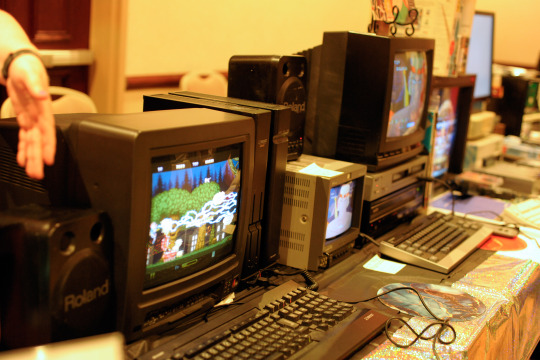
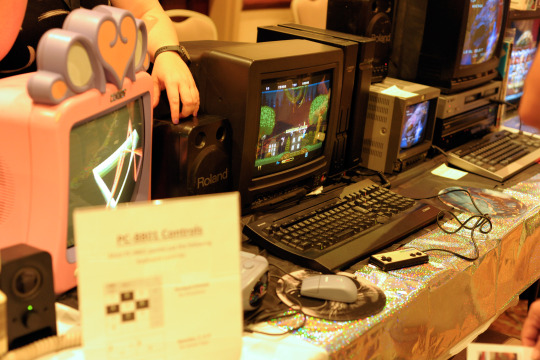
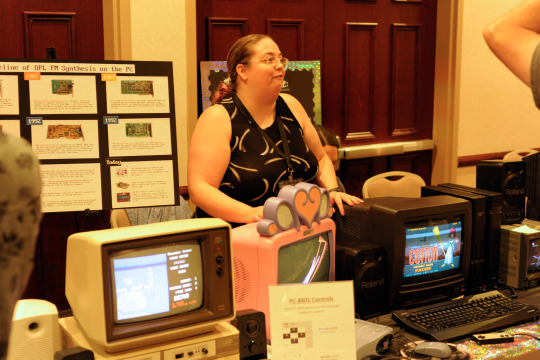


Various Japanese computers from thegirlg33k - VCF Midwest 18
#vcfmw18#vcf midwest 18#vintage computer festival midwest 18#commodorez goes to vcfmw18#msx#laserdisc#casio loopy#sharp 68000
80 notes
·
View notes
Text
just read a Really good time loop fic and now its 2am and i need to reevaluate my life choicdz
#i was supposed to read a oneshot before bed#just a oneshot#it was 68000 words and that was 4 hours ago
8 notes
·
View notes
Note
Hi!!!!!!
So happy that you have found time to write again!
By now I have reread the story too many times so I have been trying to “force” your two amazing stories on my best friend in hopes of finding someone to scream together (I have successfully dragged her across most of the fandoms I have dabbled in) and she was very excited when I explained the plot and showed her my too-long asks on your tumblr to her 🤣
Of course she would love them as much as I do, and she would be running out of excuses for wips (hahahaha) when it looks like the final chapters might be happening!
Very very excited! Thank you so much for taking the time to write! 😘
Hey hey!!!
Aww thanks so much!! I know its not for everyone and wips sometimes arent everyones cup of tea either but i hope she likes it if she gives it a try!! ive had the wildest month in the world so im only now starting to clean them up, but really hoping to have them up soon before school gets crazy again <3
leaving a snippet here for you since i love it so so much but am unfortunately about to cut it!
In Brazil Max doesn’t even bother pretending he wants to use his own hotel room. Charles has only been settled for fifteen minutes when a polite knock rings through the room, and when he opens the door it’s to the sight of Max standing in front of it, tapping away on his phone, his backpack slung precariously over the handle of the suitcase resting beside him.
“Is the WiFi working for you?” he asks in lieu of a greeting, wandering past Charles when Charles steps aside.
“I don’t know,” Charles says, amused. “I just got here.”
“Oh. Same.” He flops backward onto the bed, his knees hanging over the edge, not looking up when his suitcase finally overbalances and falls to the floor with a clatter. He drops his phone somewhere over his head, stretching his arms until they shake. He looks lazy and content, easy with the way he’s made a place for himself in Charles’ space, like he knows he’s always welcome. Charles wants to get on the bed and crawl toward him, one palm on his sternum, and see what his mouth feels like against Charles’ upside down.
He swallows hard.
“Do you want to order room service?” Max asks him.
They have places to be. Charles is pretty sure they do, anyway. They always do. He and Max have been apart for barely ten hours. It’s not long enough to miss someone; not at all.
He lets Max pick up the menu and narrate it aloud to him, halfheartedly debating each item while Charles systematically empties his suitcase across the entirety of the room. Max finally toes his shoes off and slides backward to sit against the headboard, picking up the phone and fiddling with the cord as he orders them a ninety dollar pizza and a seventy dollar fruit tray and a fifteen dollar bottle of sparkling water, and then mumbles something about putting it on his room’s tab instead of Charles’, even though their teams foot the bills anyway. As soon as the phone thunks down into the cradle Charles drops the shirt he was pretending to fold and turns to crawl onto the bed and curl into Max’s side.
Max’s hand settles on his waist, heavy and warm. “They said fifteen minutes,” Max tells him. His eyes are wide and soft.
Charles shakes his head. “That’s fine,” he answers. His chest feels too big—too full. Max is looking at him with a gentle kind of happiness, and when Charles thinks about him seeking Charles out and living in his space he feels too much. He doesn’t know what to do with it all.
He cups his face and kisses him in greeting, finally—means to keep it short and sweet, but Max pulls him closer immediately. It’s stupid; it shouldn’t feel the way it does, when they’ve barely been apart a day. It doesn’t matter.
He relaxes into Max’s hold a little too much, half-sprawled across his lap and unbalanced because of it. Max just rolls them until they’re laying sideways, their heads at the foot of the bed, kissing lazily all the while. Time turns soft and elastic, everything else drifting away, Charles caught somewhere in all the things they’re pressing against each other’s lips: hello’s and how are you’s and I missed you’s and I love you’s.
When a woman comes with the room service cart Charles has to get up and let her in with wobbly legs, his lips tingling. He winces behind her back when he registers her alpha scent as she passes him, a stark contrast to the happy tangle of Charles and Max’s scents that’s taken all of half an hour to permeate the room. There’s no way she doesn’t notice it, but she doesn’t say a word. Max gives her a bashful red-lipped smile and a tip that’s double the cost of their food, and Charles resists the urge to put his face in his hands.
#if i had words#if anyone saw me posting anonymously on ao3 in the last few weeks? look away#busy means too busy to work on the 68000 word project#it doesnt mean too busy to dick around on anon#lestappen#writing tag
26 notes
·
View notes
Text
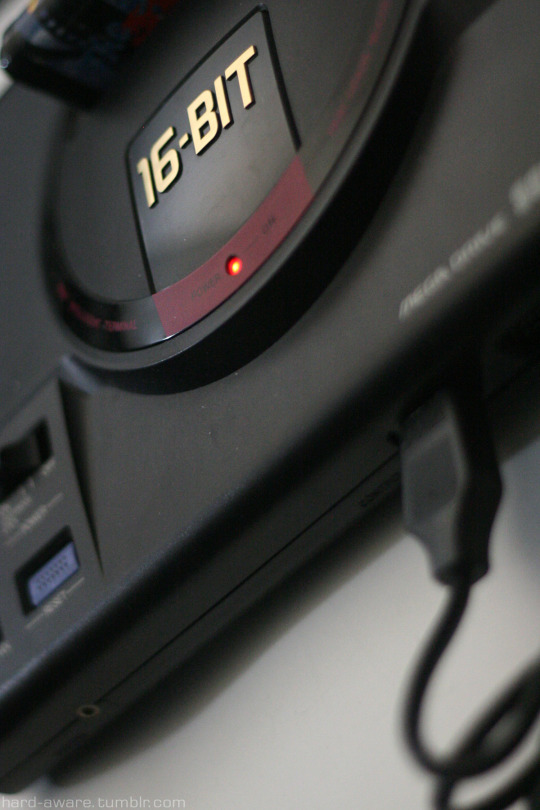
#Mega Drive#Sega Genesis#SEGA#Home video game console#video game#console#1988#Motorola 68000#Zilog Z80#Yamaha YM2612#Sega Meganet#Sega Channel#XBAND
13 notes
·
View notes
Text
Amiga 1000
The Amiga1000 was introduced in the summer of 1985 and was the first machine in the Amiga family. Commodore acquired the technology through the acquisition of the Amiga company, which was originally developed by engineers Jay Miner and Larry Kaplan who had left Atari.
The goal was to develop a gaming platform with graphics and sound capabilities ahead of its time. This goal was achieved, but in the process, they created a complete computer instead of a game console.
The technical side of things went well enough, but financial problems meant they had to look for an investor, and ended up with Commodore.
The Amiga 1000 was a true multimedia computer. The 7MHz Motorola 68000 (PAL/7.09MHz PAL NTSC/7.16MHz) and 256kB of memory were roughly equivalent to those offered by the competition. In contrast, the 8-bit stereo sound and outstanding color graphics were well ahead of its contemporaries. However, neither the PC, Atari ST, nor even the Apple Macintosh had a multitasking operating system (AmigaOS). (although until the advent of faster machines, this was a disadvantage rather than an advantage) Read more about the story here: Geekometery - Jay Miner & The Amiga Computer
Check these out too if you are interested in retro computing
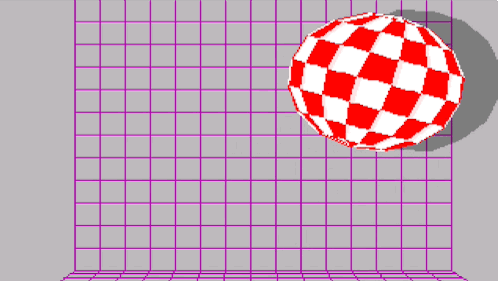
the iconic "Amiga ball" which seemed like a fantastic thing at the time.

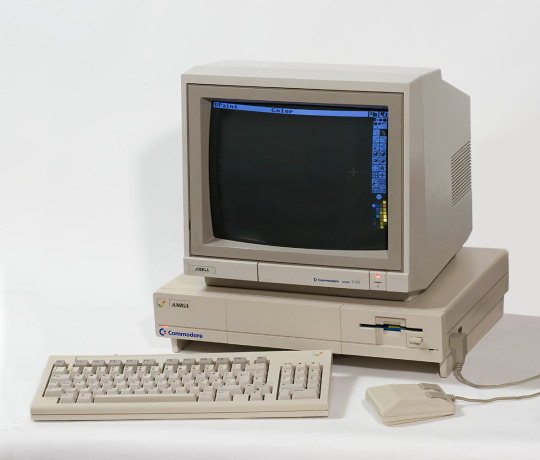


A1000 cover sheet signed by the team members

A1000 in the Stranger Things 4
#amiga1000#amiga#commodore#commodore amiga#retrogaming#retro computing#motorola#Motorola 68000#m68k#jay miner#larry kaplan#source: guialcoholic#1980s
38 notes
·
View notes
Text
I've already made my views on staying in H**st*n known, so I feel like the nightmare I had last night with floodwater seeping in through all four walls of the apartment and filling the room while Meli and I were trapped inside was excessive and frankly entirely uncalled for
#me to my brain: i know bitch!! we're leaving!!#for all y'all people who can't stop moving here: it's like that. well. that and endless freeway gridlock/68000 wrecks a year
7 notes
·
View notes
Link
0 notes
Text

jesus
3 notes
·
View notes
Text
Violence is an ambiguous and amorphous thing. Physical violence is obvious (you can’t really miss being hit in the face), but it is not the only kind of violence. And although oppression through physical, say military, means is easy to identify, oppression does not necessarily require the use of fists or a baton to occur.
In his book Violence, Peace and Peace Research, Norwegian political scientist Johan Galtung, a prominent scholar in peace studies, outlines three different types of violence: direct, structural and cultural violence.
Direct violence includes actions taken by an actor against a subject, such hitting, maiming, killing, imprisoning. So aggression in all forms. It also includes the act of insulting a person, demeaning a person, shouting at a person, and all the acts of micro-aggression that we have begun to collectively recognize.
Structural violence is at its core social injustice, which is defined as injustice and inequality built into the very structure of society, resulting in unequal power and imbalanced life chances. Systemic racism is structural violence.
Structural violence, therefore, refers to all of the institutional and societal means by which a social group is curtailed, isolated, repressed and oppressed, such as socioeconomic marginalization, for example. Systematic refusal of care on a specific social group is structural violence. Notably, all the societal means that oppress by “keeping the underdogs on the outside, will impede mobilization.” (p. 38) Meaning that the inability to resist is integral to structural violence.
Cultural violence exists in any and every aspect of a culture that can be used to legitimize violence in its direct or structural forms. It’s the value systems, the ideas, the prejudices, the stories, the jokes, the slurs, the nicknames to refer to a marginalized or oppressed group. Fat phobia. Ableism.
Most importantly, Galtung underscores that the three types of violence function together, integrated, justifying, feeding and self-fulfilling each other, in a system in which “cultural violence makes direct and structural violence look and feel right, or at least not wrong.” (p. 39) Cultural and structural violence make it so that direct (physical) violence seems unavoidable, inevitable, even preferred and justified.
To sum up with an exagerated hypothetical example, when a Donald Trump supporter starts screaming in the face of person of colour marching in a Black Lives Matter protest, the slurs he uses are cultural violence, his screaming and physical posturing are direct violence and the cops who look on and do nothing are exercising structural violence. The fact that Black Lives Matter demonstrations happen, on the one hand, and are repressed by armed, militarized forces on the other hand are both examples of how structural violence impedes mobilization and resistance.
I’ve got my tumblr inbox turned off so I really have to commend the person who actually emailed me to let me know they don’t like the things I’ve posted about the UnitedHealth CEO being murdered on their commitment to their beliefs.
But seen as how you emailed me from a dud email that appears to be bouncing back replies and I really wanted to address something you said to me about violence begetting violence:
My migraine medication, the medication I was given for my debilitating neurological disease that has gotten so bad I spent most of this year actively suicidal, costs $1300 a month.
My insurance covered it. But only because my doctors office went to fucking war for me because I’m a high anaphylaxis risk for the drugs the insurance wanted me to try.
Because that’s the thing.
My doctors knew, based on my documented medical history, I likely wouldn’t be a good fit for the “first line” of preventative migraine drugs, but because of insurance, I had to be given drugs that were contradictory to my other life threatening conditions, because otherwise insurance wouldn’t cover anything else.
I failed them. Spectacularly and with an anaphylactic reaction to one of them. And I was still warned insurance would fight me because I hadn’t tried the remaining drug they wanted me to try.
A drug which I would have to take in an ER waiting room because my mast cell disease is unpredictable but insurance wouldn’t cover in-patient treatment to let me try it safely under medical supervision.
Is that not violence?
Were all the times I was denied coverage for vital and necessary procedures that could have prevented my disabilities from worsening not violence?
Maybe not in the sense you mean. But I assure you it felt very much like violence to me.
Do I condone murder? No, obviously. But I’m also sick and tired of people pretending that what is happening to the American people every day isn’t eugenics through class warfare.
Violence begets violence.
It sure fucking does.
Maybe these insurance companies should have thought of that first.
#Violence theory#The USA have a healthcare racket#What passes for the us healthcare system is violence of the highest order#68000 people die a year because of that violence
28K notes
·
View notes
Link
Chapters: 1/1 Fandom: Elisabeth - Levay/Kunze Rating: Mature Warnings: Creator Chose Not To Use Archive Warnings Relationships: Rudolf von Österreich-Ungarn | Rudolf Crown Prince of Austria/Der Tod | Death (Elisabeth) Characters: Rudolf von Österreich-Ungarn | Rudolf Crown Prince of Austria, Der Tod | Death (Elisabeth) Additional Tags: Rudolf and Tod spending some time together, that is basically all this fic is, just some kind of disturbing fluff, and I wanted to write a little more on Tod's wings Series: Part 11 of Mirrorverse Summary:
It took two and a half months, in the end, but Rudolf did return to Mayerling.
#a mirrorverse oneshot has come into existance#look at the total word count for mirroverse#that is basically the reason this fic exists#I mean also I like writing creeply Rudolf and Tod being intimate#but mirrorverse was#68000 words after the last chapter of needs of the few#and fitzrove pointed out to me how much of a travesty that it wasn't 69000 words#waggles eyebrows#so this happened
0 notes
Text







Christie Dress
A shorter variation of my Cold Shoulder midi dress.
Fun fact: got this idea from @zumzumbabasims who showed me this 1993 Barbie Fashion Favorites #68000 dress (eBay image I found) and suggested the name.
The uv-mapping and texture are kind of a mess. But it works, so...
Details:
categories: everyday, formal, maternity, yes it has a proper pregnant morph!
adults only
2 recolourable channels: the top shoulder ruffle part, and the body
has a bunch of presets using base game patterns I thought were cute
low poly count, gameplay friendly: 3900 poly
Credits:
anubis love paradise dress mesh and texture
base game and showtime EP for additional meshes and textures I used
Flaws:
patterns on the shoulder ruffle part are rotated 90 degrees relative to the body - this was how the original dress was mapped and I couldn't find space on the uv map to change the orientation
you may notice some misalignment at the seams of the dress where I couldn't match stuff up
the shoulder part does not always play well with poses with raised arms
A simple little maxis match dress if you want it...
Download: simfileshare / mega
#s3cc#ts3cc#the sims 3#ts3#dl: cas#ive been feeling very burnt out so these pics are just basic and i had no real idea/inspiration for the styling other than “barbie?”
263 notes
·
View notes